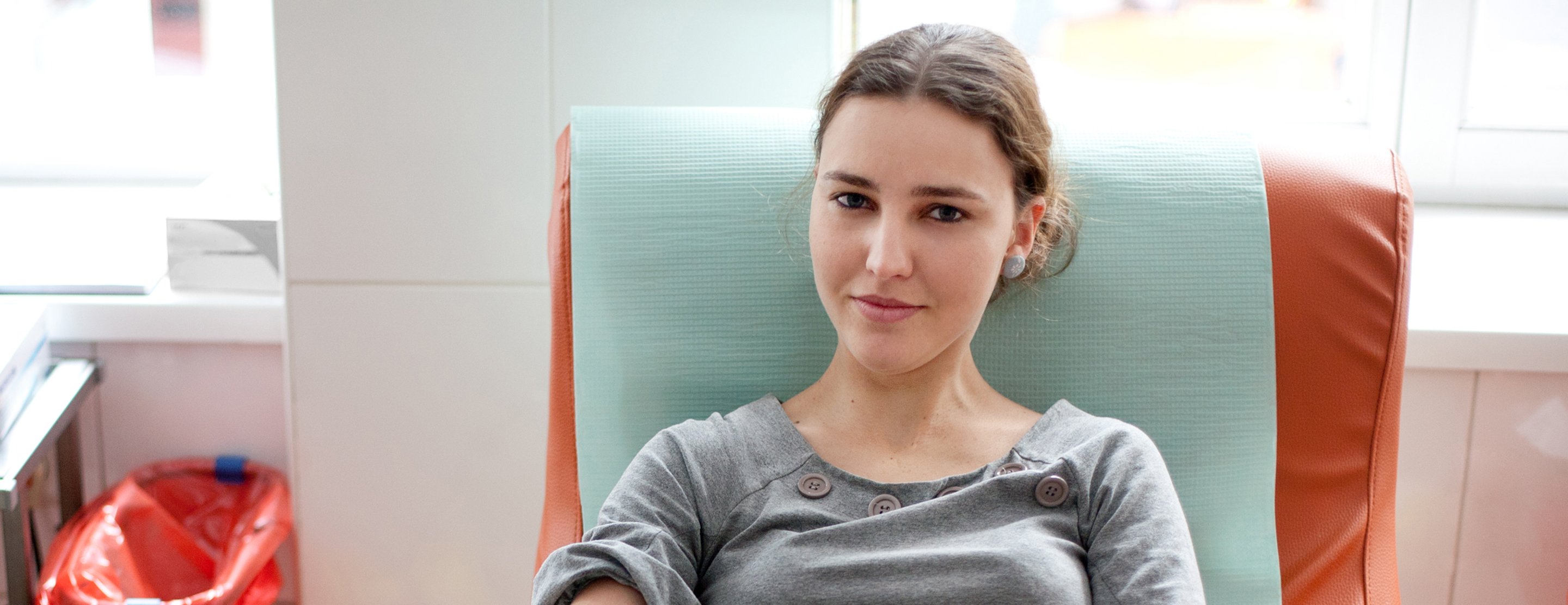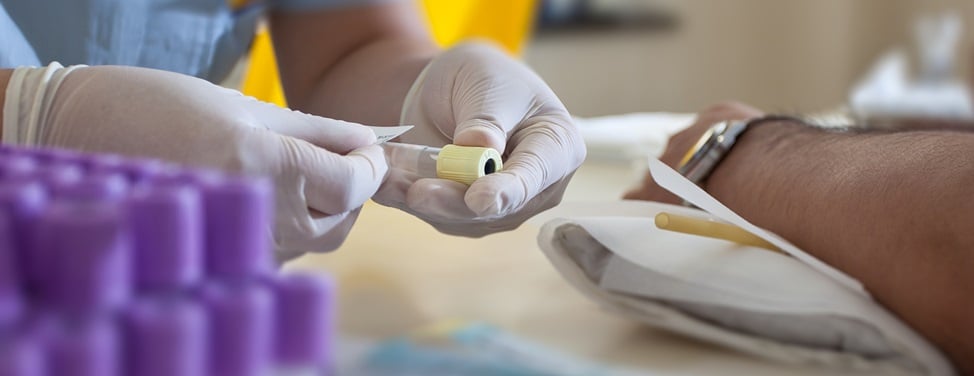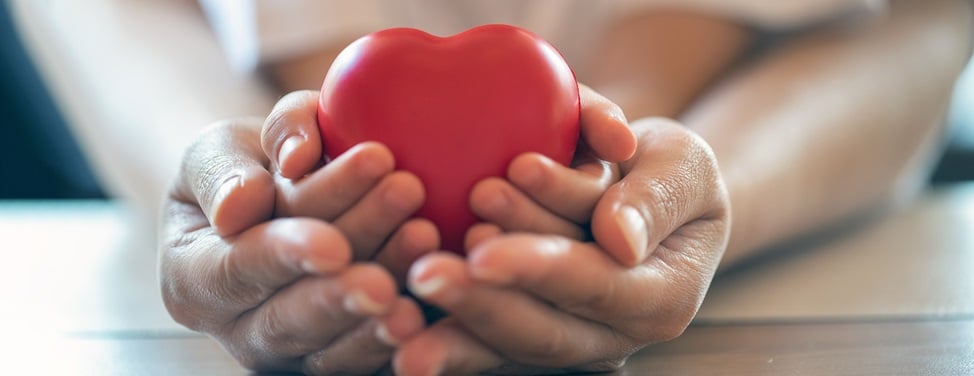- Can blood be donated elsewhere for my use at UCSF?
- Can blood be transfused immediately after donation?
- How long does it take to donate?
- Will donating hurt?
- Should I eat before donating?
- What if I am anemic?
- Will aspirin affect my blood donation?
- How long does it take my body to replace blood I donated?
- What is the shelf life of blood?
- Why is the shelf life shorter with donations from blood relatives?
- What is the shelf life of platelets?
- Are there special fees for autologous or designated donations?
- What if I do not use all of the blood donated for me?
- How do I find out the availability of blood for my use?
- Are there other donors who have increased risks of HIV or other infections who are also excluded from donating blood?
- Why are some people, such as heterosexuals with multiple partners, allowed to donate blood despite increased risk for transmitting HIV and hepatitis?
Can blood be donated elsewhere for my use at UCSF?
You may be able to donate blood at your community blood bank for your use at UCSF. However, extra time and potential processing and transfer charges by the blood bank performing the blood drawing are necessary. Consult with your local blood bank for their policies and guidelines. You can confirm receipt of blood drawn elsewhere and transferred to UCSF for your use by calling the Blood Availability Line, (888) 226-8806.
Can blood be transfused immediately after donation?
No, the donation needs to be processed and tested. This takes three working days from the date of donation.
How long does it take to donate?
The blood donation process takes 30 minutes once the process begins. The actual blood donation takes five to 10 minutes. Platelet donation takes two hours, once the process begins.
There is very little discomfort in donating. Try our pinch test to experience the sensation similar to how a blood donation feels:
- Bend your elbow slightly.
- Grab a 1-inch bit of skin on the inside of the bend.
- Pinch it lightly between your thumb and forefinger.
Yes, a low-fat meal taken within four hours of donating is recommended. Refreshments are also available both prior to and after your donation.
Anemia is not always a permanent condition, so unless you are under a doctor's care for anemia, you will be a suitable donor.
Will aspirin affect my blood donation?
The chemical composition of aspirin impairs the ability of platelets, a component of blood that plugs leaks in blood vessels to prevent bleeding, to function properly. Platelet donors must refrain from donating for 72 hours if they have taken any products containing aspirin.
How long does it take my body to replace blood I donated?
The body immediately works on restoring blood that was donated. Fluid stored in the tissues returns to the blood stream. Red blood cell production speeds up. A donor's blood volume is restored within a few hours. Red blood cells replace themselves more slowly, but are restored within the interval between donations.
What is the shelf life of blood?
Blood from a blood relative of the patient has a shelf life of 28 days. A non-blood relative's blood has a shelf life of 35 days.
Why is the shelf life shorter with donations from blood relatives, as opposed to non-blood relatives?
Donations from blood relatives must be irradiated before use. Irradiation shortens the shelf life by seven days.
Irradiation is done to prevent Graft versus Host Disease (GVHD). GVHD is a disease in which the donor's white blood cells attack or "reject" the patient's tissues because the donor's white blood cells identify the patient's cells as "foreign." Irradiation prevents the white blood cells in the donor's blood donation from attacking the patient's tissues, but leaves the rest of the blood (red blood cells, platelets, plasma, etc.) intact.
What is the shelf life of platelets?
Platelets have a shelf life of five days.
Are there special fees for autologous or designated donations?
Many blood donation centers charge a fee for autologous or designated donations, with payment due at the time of donation. UCSF applies all charges towards the patient's hospital bill.
Patients with questions regarding fees and billing for using a blood donation center other than UCSF should:
- Ask the particular blood donation center about their fees and billing policies.
- Ask the patient's insurance carrier about their fee coverage.
What if I do not use all of the blood donated for me?
Your autologous blood can be frozen for up to one year in the event of a postponement or cancellation of your surgery. However, this procedure is costly, and therefore is done only when requested by your doctor. If not frozen, autologous units of blood are discarded if they are beyond the shelf life expiration of 35 days.
Designated donor units are stored for your use until your discharge or their expiration, whichever event comes first.
Please note that we do not have a credit system for designated donors that are not compatible with your blood type. All designated units of blood that are not compatible for the patient are released to the allogenic blood supply.
How do I find out the availability of blood for my use?
Information regarding units of blood reserved for a patient can be obtained by calling the Blood Availability Line at (888) 226-8806.
Are there other donors who have increased risks of HIV or other infections who are excluded from donating blood?
Intravenous drug abusers are excluded from giving blood because they have prevalence rates of HIV, HBV, HCV and HTLV that are much higher than the general population. People who have received transplants of animal tissue or organs are excluded from giving blood because of the still largely unknown risks of transmitting unknown or emerging pathogens harbored by the animal donors. People who have recently traveled to or lived abroad in certain countries may be excluded because they are at risk for transmitting agents such as malaria or variant Creutzfeldt-Jakob Disease (vCJD). People who have engaged in sex in return for money or drugs are also excluded because they are at increased risk for transmitting HIV and other blood-borne infections.
Why are heterosexuals with multiple partners allowed to donate blood despite increased risk for transmitting HIV and hepatitis?
Current scientific data from the U.S. Centers for Disease Control and Prevention (CDC) indicate that, as a group, men who have sex with other men are at a higher risk for transmitting infectious diseases or HIV than are individuals in other risk categories. While statistics indicate a rising infection rate among young heterosexual women, their overall rate of HIV infection remains much lower than in men who have sex with other men. For information on HIV-related statistics and trends, go to the CDC's HIV/AIDS Statistics and Surveillance Web page.
































